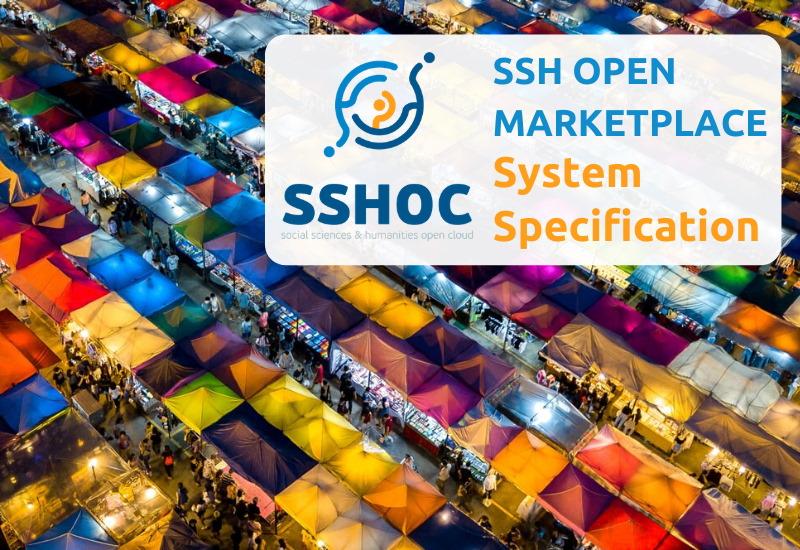
- Social Sciences & Humanities Open Cloud
SSH Open Marketplace: System Specification

Date:
05 December 2019
The SSHOC consortium has released the system specification for the SSH Open Marketplace. As the core of the SSHOC project, the marketplace will be a discovery portal where tools, services, training materials and datasets useful for SSH research communities will be pooled and harmonised to offer a high quality, contextualised answer at every step of the SSH research data life cycle.
What’s in the SSH Open Marketplace system specification?
The report just delivered to the Commission defines the service requirements, data model, and system architecture for the SSH Open Marketplace. The information was gathered via an extensive requirements engineering process and thorough state-of-the-art analysis. In developing the data model itself, as much as possible of the work from previous European projects was taken into account, and integration with the EOSC infrastructure was a primary concern at every step.
-
User requirements
Defined in terms of user-centered design principles and an agile approach to software development, user requirements were documented by identifying key stakeholders including future users, gathering user stories via interviews, workshop sessions and desk-based research, and transforming those stories into initial technical requirements.
Eight thematic groups of user stories were identified. These take into account the specific types of content future users would expect to find, and also the platform’s user-friendliness.
- Contextualisation
- Community Platform
- Training materials
- Discovery and usability
- Datasets
- Curation
- GDPR (Compliance)
- Openness
-
Data model
The proposed data model is generic and flexible, and identifies four main object types:
- Tool (understood as both a service and a software)
- Training material
- Dataset
- Activity (understood as scenario or workflow)
Links to relevant research papers and resources are also proposed.
-
System architecture
This section of the report describes the key internal and external components and their dependencies. The development work is currently done in a Gitlab instance: https://gitlab.gwdg.de/sshoc
-
Further developments
Here the focus is on the iterative UX process as well as the global orientation for the curation, governance and sustainability of the Marketplace.
How will the SSH Open Marketplace be integrated into EOSC?
In terms of the role envisioned for the SSH Open Marketplace in the EOSC landscape, the following tentative observations can be made:
- The SSH Open Marketplace will become one of the EOSC services and as such will be represented in the EOSC catalogue/marketplace. In the current set up it would be categorised under “sharing & discovery.”
- Given that the SSH Open Marketplace itself is a discovery service (a catalogue), the question arises of a potential overlap of data or functionality with the EOSC Catalogue. In all cases, any duplication of provider effort when submitting information about their services and resources must be avoided.
- The SSH Open Marketplace aims to make use of EOSC Federating Core, especially the Federated Identity (AAI) services and the Helpdesk.
What’s in this SSHOC System Specification for the wider EOSC?
The system specification and the approach to defining it provides a valuable source of inspiration for the EOSC Architecture Working Group and the other cluster projects. The report also serves as an instrument to communicate with stakeholders such as content providers or the EOSC-hub project. Finally, it lays the foundations for integration activities.
Read the full document on Zenodo: D7.1 System Specification - SSH Open Marketplace
Download the Press Release and disseminate it among your network "SSHOC Releases System Specification for SSH Open Marketplace, December 2019"
Stay in touch! Follow the project to stay up-to-date with developments around the Marketplace: sign up to our newsletter
With thanks to Laure Barbot (DARIAH), Clara Petitfils (Huma-Num), Friedel Grant (LIBER) and Marieke Willems (Trust-IT) for contributing to this post.
